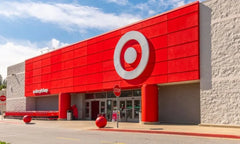
C&S Wholesale Grocers Acquires SpartanNash: Implications for the Grocery Industry
Table of Contents
- Key Highlights
- Introduction
- The Mechanics of the Acquisition
- Implications for Independent Retailers
- Consumer Impact
- Lessons from Recent Industry Disruptions
- Future Developments in the Grocery Sector
- Conclusion
- FAQ
Key Highlights
- C&S Wholesale Grocers has acquired SpartanNash for $1.77 billion, significantly consolidating the grocery wholesale sector.
- The merger aims to enhance supply chain efficiency and respond to competition from mass merchants like Walmart.
- This acquisition raises concerns about market concentration and its effects on independent retailers and consumers.
Introduction
In an era where grocery shopping has transformed into a complex blend of convenience and competition, the announcement of C&S Wholesale Grocers acquiring SpartanNash for $1.77 billion marks a pivotal moment in the industry. This merger not only creates a powerhouse in grocery wholesale but also underscores the rapid consolidation taking place in the sector. With C&S managing over $23 billion in annual sales and SpartanNash bringing its own extensive distribution network, the combined entity will oversee more than 60 warehouses and 200 grocery stores, serving thousands of independent retailers across the United States.
This acquisition raises essential questions regarding the future landscape of grocery distribution. What does this mean for small businesses and consumers? How might this merger impact prices and product availability? This article explores the broader implications of this significant transaction and how it reflects ongoing trends in the grocery industry.
The Mechanics of the Acquisition
C&S Wholesale Grocers, a privately held distributor, has made headlines with its strategic acquisition of SpartanNash, a publicly traded company. The deal is structured to enhance operational efficiencies, allowing the combined company to leverage economies of scale. According to a joint press release, the merger aims to secure better pricing for retailers and consumers alike by streamlining supply chains and optimizing logistics.
Financial Context
C&S has demonstrated a robust financial position, with ample cash reserves to facilitate this acquisition. Previously, the company sought to expand its footprint by attempting to acquire 600 stores as part of the ill-fated Kroger-Albertsons merger. More recently, C&S expanded its operations by acquiring over 170 Southeastern Grocers stores, reaffirming its commitment to vertical integration and investment in retail.
Competitive Landscape
The grocery wholesale sector is becoming increasingly concentrated, with just four major players—C&S, McLane, UNFI, and KeHe—dominating the market. This level of consolidation raises significant concerns regarding competition and market dynamics. The last significant merger of this scale occurred in 2018 when UNFI acquired SuperValu in response to Amazon's acquisition of Whole Foods, showcasing how market pressures can drive consolidation.
Implications for Independent Retailers
One of the most immediate concerns regarding the C&S-SpartanNash merger is its potential impact on independent grocery retailers. These small businesses rely heavily on wholesalers for their inventory and pricing strategies. With fewer wholesale options available, independent grocers may face challenges in maintaining competitive pricing and product diversity.
The Role of Wholesalers
Wholesalers play an essential role in the U.S. grocery ecosystem, often operating behind the scenes. They manage the distribution of products from manufacturers to retailers, but their consolidation could limit choices for both brands and retailers. The result? A more homogeneous selection of products on grocery shelves and potentially higher prices for consumers.
Cost-Plus Relationships
Retailers typically engage in volume-dependent, contractual “cost-plus” relationships with wholesalers, incentivizing the use of a primary wholesaler to manage a significant portion of their product assortment. This arrangement could lead to increased costs for consumers if wholesalers impose higher fees or deductions on brands, a practice that could ultimately reduce the variety of products available.
Consumer Impact
As the grocery sector continues to consolidate, consumers may experience the effects in various ways. While the merger is positioned as a means to improve efficiency and lower prices, there is a risk that it could lead to higher prices and reduced product diversity in the long run.
The Price of Consolidation
The consolidation of wholesalers may lead to increased market power, allowing these giants to dictate terms to both suppliers and retailers. This power dynamic could result in higher prices for consumers, particularly if competition diminishes and fewer options are available. With a concentration of power in the hands of a few companies, the grocery landscape risks becoming less responsive to consumer needs.
Lessons from Recent Industry Disruptions
The recent cyberattack on UNFI serves as a cautionary tale regarding the risks associated with consolidation. When a significant player in the grocery wholesale market experiences disruptions, the effects cascade through the supply chain, impacting thousands of stores and millions of consumers. This incident highlights the vulnerability of a concentrated supply chain, where a single point of failure can have widespread repercussions.
The Fragility of Centralization
The UNFI outages exposed the fragility inherent in a consolidated grocery wholesale system. As retailers scrambled to find alternative suppliers, many faced shortages and increased costs. This situation emphasizes the potential risks associated with a lack of diversity in wholesale suppliers, raising questions about the sustainability of such a model in the face of additional disruptions, whether they be technological, geopolitical, or economic.
Future Developments in the Grocery Sector
The acquisition of SpartanNash by C&S is likely to set off a chain reaction within the grocery industry, prompting further consolidation efforts among other wholesalers and retailers. As companies strive to compete with mass merchants like Walmart, the pressure to merge or partner will likely increase.
Potential for Further Consolidation
Expectations are that other wholesale players may seek to follow suit, either through mergers or strategic alliances, to bolster their market positions. This trend could lead to an even more concentrated market, potentially reducing competition and limiting options for both retailers and consumers.
Conclusion
C&S Wholesale Grocers’ acquisition of SpartanNash is a landmark event in the grocery industry that encapsulates ongoing trends of consolidation and market concentration. While the merger promises operational efficiencies and potential cost benefits, it also raises critical concerns about the future of independent retailers, consumer choice, and the overall resilience of the grocery supply chain.
As consumers become increasingly aware of these dynamics, the industry may need to reevaluate its approach to competition and diversity. The future of grocery shopping—where competition, innovation, and consumer needs are at the forefront—depends on how the industry navigates these challenges and the strategies employed to ensure that consumers continue to receive the quality and variety of products they demand.
FAQ
What led to the acquisition of SpartanNash by C&S Wholesale Grocers?
C&S Wholesale Grocers acquired SpartanNash to enhance operational efficiencies, expand market reach, and respond to competition from mass merchants like Walmart.
How will this merger impact independent grocery retailers?
Independent grocery retailers may face challenges in maintaining competitive pricing and product diversity due to reduced wholesale options resulting from the merger.
What are the potential risks of increased consolidation in the grocery industry?
Increased consolidation could lead to higher prices for consumers, reduced product diversity, and a less resilient supply chain, making it vulnerable to disruptions.
What lessons can be learned from the recent UNFI cyberattack?
The UNFI cyberattack underscores the fragility of a consolidated grocery wholesale market, where a single point of failure can lead to widespread disruptions affecting thousands of stores and consumers.
How might the grocery industry evolve following this acquisition?
The C&S-SpartanNash merger may prompt further consolidation among other wholesalers and retailers, potentially leading to an even more concentrated market landscape.
Ενδυναμώστε το ηλεκτρονικό σας εμπόριο με τις εβδομαδιαίες μας αναλύσεις και ενημερώσεις!
Μείνετε ευθυγραμμισμένοι με το τι συμβαίνει στον κόσμο του εμπορίου
Διεύθυνση ηλεκτρονικού ταχυδρομείου
Επιλεγμένο για Εσάς

24 June 2025 / Blog
Mercedes-Benz Launches Major Electric Van Fleet for Amazon in Europe
Διαβάστε περισσότερα
24 June 2025 / Blog
Target Tests Factory-Direct Shipping Model to Compete in Budget Retail Market
Διαβάστε περισσότερα
24 June 2025 / Blog
